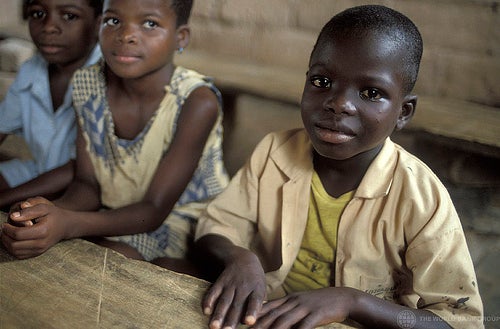
Parents in Ghana, as in any other country around the world, want the best for their children. Most parents believe education is the answer to their children leading a more prosperous life. But does it matter if education is provided by the government or the private sector? What is the role of the government in ensuring access to quality education?
Along with a team of colleagues, I recently travelled to Kasoa, a rapidly growing area on the outskirts of Accra, Ghana – and one of the fastest growing areas in Africa – to analyze private sector engagement in education. As soon as we arrived, we could tell that this vibrant, bustling town had a sense of purpose. Our goal was to locate the different types of private schools in the area, including for-profit, non-profit and faith-based.
Our team of local consultants, led by Husein Abdul-Hamid, found surprising results. The local school market in Kasoa includes 207 schools, only 7 of which are public. The reason? As people move within the country for jobs, and to provide for themselves and their families, the private education sector is often the first to respond, providing education services needed by the local community.
Outside Ghana, the private sector has grown significantly in its role of supporting learning for all. Between 1990 and 2010, the percentage of students enrolled in private primary schools doubled from 11% to 22% in low-income countries globally. In some of the poorest countries the private sector is large and growing. In Liberia, 60% of secondary school enrollments are private while in Sierra Leone the figure is 50% and in Burkina Faso 40%. Education in Somalia is being delivered by a number of non-state organizations. In many contexts, the size of the private sector is often unknown.
However, the fact that the private sector provides a greater share of education services does not eliminate the need for the government to play a stewardship role to ensure that all children have access to a quality education. The government’s role in setting up an effective regulatory environment is paramount.
This is the idea behind Education Markets for the Poor, a research partnership between the World Bank and the Department for International Development (UK), started in March 2013. The goal is to look at 60 countries, states or provinces across Sub-Saharan Africa and South Asia, to examine the current regulatory environment and whether it supports four key policy goals:
- Encouraging innovation amongst providers. The government ensures non-state sector schools can provide education services that meet the needs of the local community.
- Holding schools accountable for results. The government monitors and ensures that high-quality education services are delivered by non-state providers.
- Empowering parents, students and communities. The government provides information to parents so that they can make informed decisions about sending their children to non-state schools.
- Promoting diversity of supply. The government ensures new non-state schools are able to enter the market in order to support new models and reduce monopolies.
Based on the partnership’s activities so far, what have we learned?
- There are differences between policy intent and implementation. Having well thought out and well-written policies does not mean there is effective government engagement with the private sector on the ground.
- Some policies can deter the private sector from registering schools and reduce the government’s ability to provide stewardship. In one state in Sub-Saharan Africa private schools are not allowed to be situated on hilltops or undulating land or within 500 meters of a market or political party office. These strict guidelines have led to almost 90% of private schools being unregistered in the state.
- Some parents are willing to pay substantial proportions of their income to give their child a better future. Despite innovations such as paying school fees daily, early indications from one country study show that private schools might not be affordable to the poorest of the poor. However, there are also hidden costs associated with attending public schools, including school feeding and learning materials.
- Information on school quality is often not easily accessible to parents. For example, this has been overcome in Pakistan where other World Bank research has shown that providing information to parents through school report cards is an effective way to raise attainment and access and reduce school fees.
Through the Education Markets for the Poor initiative, which will run through late 2014, we are gaining a clearer picture of how the private sector is involved in providing education services around the world, while identifying key policy options for governments to engage the private sector more effectively in delivering quality education services to the poor.
Parents will continue to seek opportunities for their children to improve their life chances. This may include public schools, private schools or government-supported private schools. In short, no matter who the education provider is, there is a role for government to ensure that all schools provide a high-quality learning environment for every student. Do you agree?
Follow the World Bank education team on Twitter: @WBG_Education
Related


Join the Conversation